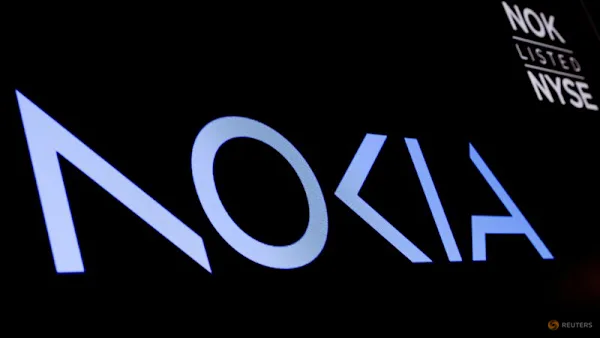Copyright ABC News

By any measure, the arguments before the Supreme Court on Wednesday have the makings of a legal blockbuster. The justices will weigh whether the Trump administration acted lawfully when it unilaterally imposed sweeping global tariffs – actions with economic consequences measured in the trillions of dollars. Beneath the trade numbers lies a constitutional clash over who holds the power to tax, regulate and declare emergencies. The outcome could redefine how far a president can stretch a congressional delegation of authority before the separation of powers gives way to executive rule. Presidential encroachment on congressional turf? Article 1, Section 8 of the Constitution gives Congress, not the president, the power to “lay and collect Taxes, Duties, Imposts, and Excises.” Tariffs traditionally fall within that legislative domain, and any bill raising revenue must originate in the House of Representatives. In 1977, after years of concern during the Vietnam era about unchecked executive action, Congress enacted the International Emergency Economic Powers Act (IEEPA). It also allows the president, upon declaring a national emergency, to regulate certain international economic transactions that threaten national security. But the statute never mentions duties or taxes. Critics, including small business owners entangled in global supply chains, argue that President Trump’s sweeping, indefinite tariffs on imports exceed the powers Congress granted under IEEPA. Conservative, free-market scholars such as Ilya Somin have called the move “the largest unilateral trade action since the Great Depression” and “a usurpation of legislative power.” They warn that allowing a president to impose what are effectively taxes without congressional approval would flip the constitutional design on its head. The Trump administration sees it differently. It has argued that persistent trade imbalances and supply-chain vulnerabilities amount to an “unusual and extraordinary threat” to national security. From that premise, it claims IEEPA gives the president the authority to “regulate importation and exportation” when foreign economic behavior undermines U.S. interests. Tariffs, the argument goes, are not primarily fiscal measures to raise money, but regulatory tools to change other nations’ conduct, and so part of a long-recognized arsenal of executive power. The major questions doctrine, with a foreign-policy twist The case before the Supreme Court represents an inflection point for a newly defined doctrine developed by the court’s conservative majority. The major questions doctrine (MQD) holds that neither agencies nor presidents can make decisions of “vast economic and political significance” without a clear authorization from Congress. The court has already used this doctrine to strike down major Democratic initiatives. In West Virginia v. EPA (2022), the court blocked Obama-era carbon regulations, holding that Congress must speak clearly before authorizing an agency to reshape an entire industry. One year later, in Biden v. Nebraska, it used the same justification to strike down student loan forgiveness, finding that a general power to “waive or modify” loans did not justify erasing hundreds of billions of dollars in debt. The Federal Circuit applied that same reasoning to Trump’s tariffs. It described the global trade restrictions – covering nearly all imports, with no time limit – as both “unheralded” and “transformative.” Because IEEPA’s text contains no clear reference to tariffs or taxation, the court concluded that the president’s action failed the MQD test. But the administration counters that the MQD has never before been applied to presidential actions regarding foreign affairs. Extending the doctrine to national security and international commerce, the administration argues, would hamstring the chief executive’s ability to act swiftly in crises that Congress cannot predict or legislate in real time. Is a tariff a tax, or just regulation by another name? At the center of the tariffs case is a deceptively simple IEEPA statutory phrase: the power “to regulate . . . importation.” Lower courts emphasized that “the power to regulate is not the power to tax.” Reading it otherwise, they said, would transfer one of Congress’ most fundamental powers to the president. The Trump administration contends that the phrase is a “capacious concept that has historically encompassed tariffs.” In short, the administration wants the Supreme Court to treat tariffs not as taxes, but as one tool among many for managing economic threats. Some critics respond that such an interpretation would erase any meaningful limit on presidential emergency powers – voices that include the conservative Goldwater Institute, the libertarian think-tank Cato Institute, and the left-leaning Brennan Center. If tariffs qualify for such a definition, they warn, then almost any trade restriction could be justified as “regulating importation,” effectively giving presidents a standing license to reshape global commerce on their own, without any congressional oversight or checks. The courts: Limits below, deference above The Trump administration’s aggressive assertions of executive power are meeting resistance in the lower federal courts, with judges finding in some cases that the administration exceeded constitutional or statutory bounds and procedural norms. Most recently, a federal judge in Rhode Island temporarily ordered the Trump administration to continue funding the Supplemental Nutrition Assistance Program (SNAP) amid the federal government shutdown, following a lawsuit by several states. Yet in many cases, the Supreme Court majority has shown a willingness to defer to broad claims of executive authority, particularly when national security or foreign affairs are invoked. In April, for example, the high court ruled 5-4 that the Trump administration could resume deportations of alleged Venezuelan gang members under the Alien Enemies Act, but said detainees must be given due process to challenge their removal. The net result of such rulings is not merely an affirming of presidential discretion, but a dramatic expansion of presidential power. Defining an “emergency” IEEPA allows presidential action only in response to an “unusual and extraordinary threat.” Whether long-standing trade deficits qualify under that definition is a central question before the Supreme Court. The administration argues that modern economies and globalized supply chains have turned trade imbalances into genuine security risks. Opponents counter that chronic economic conditions, however serious, are hardly “unusual.” Redefining ordinary challenges as emergencies, they say, would render the satutory limitation meaningless. A constitutional inflection point The tariffs litigation is about far more than trillions of dollars. It also tests the boundaries of executive power. However the Supreme Court may rule, the decision will help define the next phase of American governance: whether the constitutional separation of powers remains a real constraint, or whether the powers of the modern presidency continue to expand. James Sample is an ABC News legal contributor and a constitutional law professor at Hofstra University. The views expressed in this story do not necessarily reflect those of ABC News or The Walt Disney Company.



